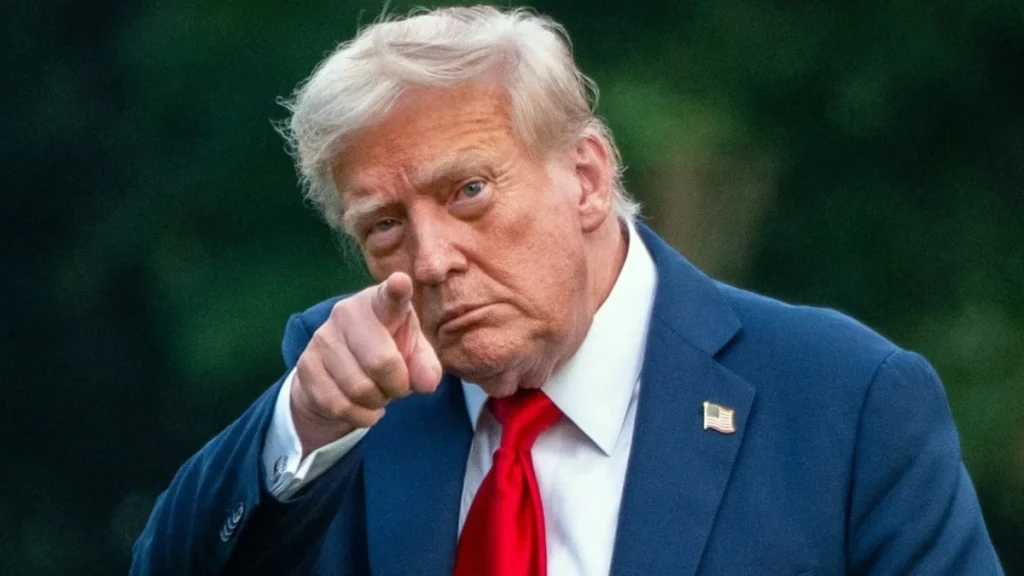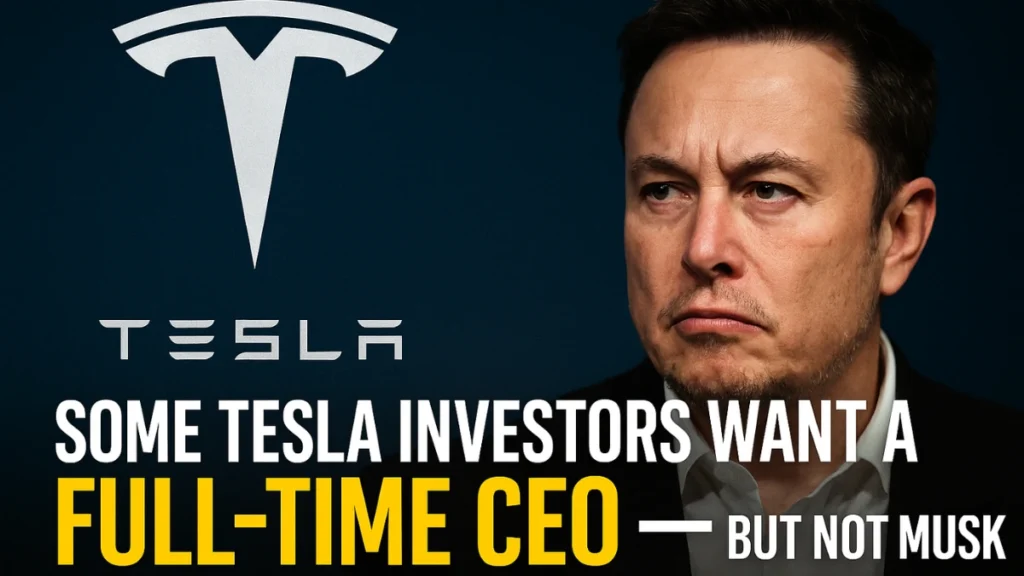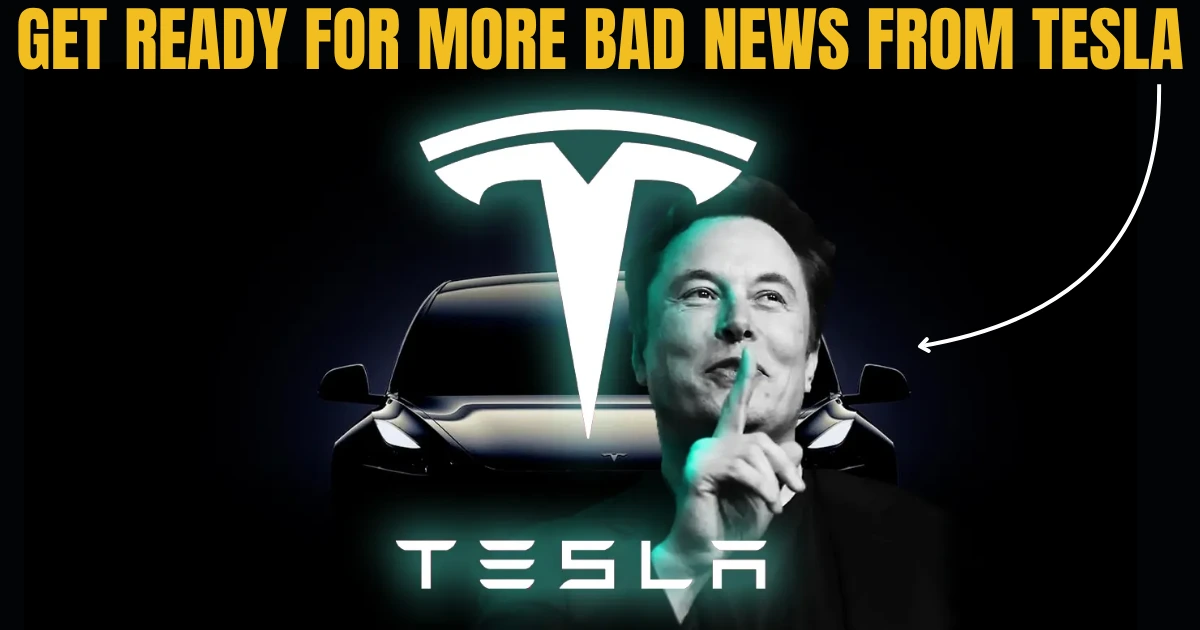Tesla’s earnings are tumbling, sales are down, and tax credits are disappearing. Here’s why investors should brace for more bad news in Tesla’s Q2 earnings and beyond.
Table of Contents
Get Ready for More Bad News from Tesla
Tesla’s decade-long growth story is hitting a sharp detour. Once considered the undisputed king of electric vehicles (EVs), Tesla is now grappling with plunging sales, declining profits, policy setbacks, and increasing global competition. With its second-quarter earnings report due soon, investors are bracing for more bad news that may define Tesla’s trajectory for the rest of 2025—and possibly beyond.
A Sales Slump Tesla Can’t Ignore
The numbers don’t lie—and they’re troubling.
Tesla has now posted two consecutive quarters of double-digit year-over-year sales declines:
- Q1 2025: Sales dropped over 13%
- Q2 2025: Sales fell 13.5%, marking the worst drop in company history
To put that into perspective: before 2024, Tesla had only experienced a single quarterly sales drop since going public. This streak of falling demand marks a stunning reversal for a company once hailed as unstoppable.
The sharp decline is even more concerning when viewed against Tesla’s prior ambitions. CEO Elon Musk had promised delivery growth of 50% annually, but instead, the company is scrambling to defend its shrinking market share from rivals like China’s BYD.
Profitability Is Now a Big Question
The impact of weaker sales is clearly visible on Tesla’s bottom line.
In Q1 2025, Tesla reported a jaw-dropping 71% drop in net income compared to the previous year. For Q2, analysts expect another decline, though not as severe—approximately $350 million, or a 24% drop in profit from a year earlier.
Tesla’s earnings are no longer protected by the kind of fat profit margins they once boasted. The company has aggressively slashed prices to boost demand, and the result has been shrinking profitability across its vehicle lineup.
Vanishing Regulatory Credits: Tesla’s Hidden Risk
One of the least talked-about, but most dangerous trends facing Tesla is the potential collapse of its regulatory credit revenue stream.
Since 2019, Tesla has raked in over $10.6 billion by selling emissions credits to legacy automakers who don’t meet environmental regulations. But that lifeline is now at risk:
- The recent Republican tax and spending bill removes financial penalties for non-compliance with emissions rules.
- This effectively ends the incentive for gas-powered carmakers to buy emissions credits from Tesla.
If this revenue stream dries up, it could be devastating. Tesla would have posted a net loss in Q1 if not for those credits.
With credit sales on the verge of extinction, Tesla is losing one of its key buffers against operational losses.

Tax Credit Cut Will Pressure Pricing (and Margins)
Tesla’s challenges don’t stop at fading regulatory credits. In October 2025, the $7,500 U.S. federal tax credit for EV buyers will expire.
That tax break has helped support Tesla’s pricing—and sales—in the U.S., where nearly half of its vehicles are sold. When that credit disappears, Tesla will likely need to:
- Slash prices again to stay competitive
- Accept lower profit margins in return
Either scenario puts Tesla’s financial health under more pressure just as it is struggling to maintain positive earnings momentum.
Tariff Troubles and Rising Costs
While Tesla enjoys some insulation from U.S. car import tariffs—thanks to its production plants in Fremont, California and Austin, Texas—it’s still exposed to tariffs on imported parts and materials.
And that exposure just got worse.
Tesla uses Chinese graphite in its EV batteries—a key material that recently became subject to new tariffs, causing a 160% increase in cost compared to last year. As Tesla’s battery cost rises, its vehicle profitability will inevitably shrink further.
And if the U.S.-China trade war escalates, Tesla could see additional supply chain disruptions and price spikes, especially in batteries and chip components.
Elon Musk’s Distractions: A Political Wildcard
Then there’s Elon Musk—the most influential, and often most unpredictable, CEO in the auto industry.
While Musk announced earlier this year that he would be stepping back from political engagements to focus more on Tesla, he has remained deeply involved in politics:
- After falling out with President Trump, Musk recently announced plans to form a third political party
- Though he no longer holds a formal position in the Trump administration, his political activism continues to dominate headlines
This political entanglement is raising governance concerns among shareholders and analysts alike. Many fear that Musk’s growing involvement in partisan issues could:
- Distract from company leadership
- Erode brand reputation, especially in key liberal and international markets
- Alienate investors seeking focus on operational execution rather than ideological positioning
Robotaxis and Robots: Hope or Hype?
To shift attention from Tesla’s current troubles, Musk continues to emphasize futuristic initiatives—robotaxis and humanoid robots.
Tesla began limited robotaxi trials in Austin, Texas, in June, but only to friends and supporters, and with a human employee still riding shotgun. There’s no clear timeline on when a profitable robotaxi rollout will occur.
Similarly, Tesla’s humanoid robot project, dubbed Optimus, has made headlines but still remains in its experimental phase. Analysts agree that the near-term revenue impact is negligible.
So while Musk’s long-term vision is captivating, it offers little relief for Tesla’s current earnings woes or investor anxiety.
Competition from China: BYD on the Rise
Tesla’s most immediate existential threat may come from China’s BYD, which is rapidly closing the gap in global EV sales.
If trends continue, Tesla could lose its crown as the world’s largest EV maker by the end of 2025. BYD’s advantages:
- Strong foothold in Asia
- Vertical integration of battery production
- Lower-cost manufacturing
All make it a formidable competitor, especially in emerging markets and Europe.
What to Watch in the Q2 Earnings Report
Investors will be closely scrutinizing the following during Tesla’s Q2 2025 earnings release:
- Revenue growth vs. Q2 2024
- Net income and EPS (Earnings Per Share)
- Margins across vehicle segments
- Updates on robotaxi deployment and AI roadmap
- Any strategic guidance from Musk regarding cost-cutting, credit loss, or political plans
Tesla’s Stock: Still a Buy?
Tesla’s stock has always been a polarizing topic. Bulls believe the long-term story—anchored in autonomous driving and clean energy—is still intact. Bears argue the valuation is completely detached from reality given:
- Weakening fundamentals
- Shrinking margins
- Musk’s erratic behavior
Unless Tesla pulls off a major surprise in its earnings report or unveils a sustainable solution to its credit and profit issues, the near-term outlook remains shaky.

Must Read = Some Tesla Investors Want a Full-Time CEO — But Not Musk
Conclusion: Is the Tesla Magic Fading?
Tesla once stood alone as the gold standard in EV innovation, profitability, and vision. But today, it finds itself beset by financial, regulatory, and political challenges. The second-quarter earnings report could be a wake-up call for investors and Musk alike.
Whether Tesla can adapt, innovate, and reassert its dominance—or whether it continues a slow slide into troubled territory—depends on how it handles these mounting pressures in the second half of 2025.
FAQs
1. Why are Tesla’s sales dropping so quickly?
Sales have dropped due to weakening demand, rising global competition, and the phasing out of government incentives like the U.S. tax credit.
2. What are regulatory credits, and why do they matter?
Tesla sells emissions credits to other automakehttps://jobseekersconnect.com/wp-content/uploads/2025/07/Get-ready-for-more-bad-news-from-Tesla.webprs who exceed pollution limits. These sales have provided billions in revenue—but new legislation could eliminate that market entirely.
3. Will Tesla lose its EV crown to BYD?https://jobseekersconnect.com/wp-content/uploads/2025/07/Get-ready-for-more-bad-news-from-Tesla.webp
It’s very likely. BYD is rapidly gaining market share and could surpass Tesla in global EV sales by the end of 2025.
4. What’s the deal with Elon Musk’s new political party?
Musk has announced plans to form a third political party, creating further distractions from his role at Tesla and adding uncertainty around brand positioning.
5. Is Tesla still a good long-term investment?
That depends on your risk tolerance. While the company still leads in EV innovation, short-term financial and operational risks are mounting.
